
Cellulose Synthase Stoichiometry Varies among Species and Tissues
Blog, Plant Physiology, Plant Physiology: News and ViewsCellulose, the most abundant biopolymer on earth, is an important structural component of the primary and secondary cell wall of plant cells. It is also found in animals (tunicates), oomycetes, and bacteria (Kumar and Turner, 2015). Besides providing support and rigidity in living organisms, cellulose…
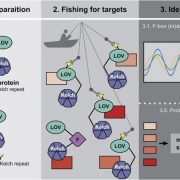
Save Time and Fish for the Clock
Blog, Plant Physiology, Plant Physiology: News and ViewsPlants live by the clock. It helps them to predict day and night as well as upcoming seasons, and to decide when it’s time for reproduction. These predictions depend on oscillating processes that involve gene transcription and protein stability, cycling in a period of, for example, 24 h. Environmental…

Subcellular Spice Trade Routes: Crocin Biosynthesis in the Saffron Crocus (Crocus sativus)
Blog, Plant Physiology, Plant Physiology: News and ViewsCommentary by Trevor H. Yeats and Raimund Nagel
Saffron is produced from the stigmas and styles of Crocus sativus flowers and is one of the most expensive spices. In C. sativus, both stigma and style are intensely crimson red in color due to the presence of three major classes of apocarotenoids: crocins,…
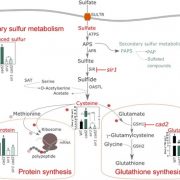
Managing Competing Interests: Partitioning S between Glutathione and Protein Synthesis
Blog, Plant Physiology, Plant Physiology: News and ViewsSulfur (S) is an essential element for cell function and responses to the environment. The primary S source is sulfate, which, following uptake by specific transporters, is reduced and incorporated into the amino acids Cysteine (Cys) and Methionine, and thereafter into proteins and peptides, including…
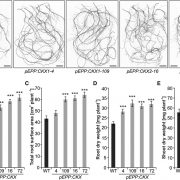
Releasing the Cytokinin Brakes on Root Growth
Blog, Plant Physiology, Plant Physiology: News and ViewsRoots explore the soil for available water and nutrients, with deep roots providing water from the lower soil layers (Uga et al., 2015) and highly branched roots searching the soil for less-mobile nutrients such as phosphate, zinc, and manganese. Root architecture results from plant developmental programs,…
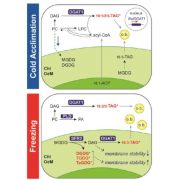
A Lipid Synthesis Enzyme Confers Freezing Tolerance
Blog, Plant Physiology, Plant Physiology: On The InsideDespite major advances in understanding cold signaling, cold acclimation, and freezing protection in model and crop species, and extensive studies of natural variation in freezing tolerance in Arabidopsis accessions, the question of which genes and mechanisms underlie freezing tolerance of wild species…
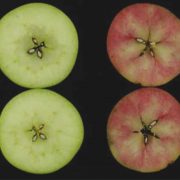
How Ethylene Reddens Apples
Blog, Plant Physiology, Plant Physiology: On The InsideEthylene is essential for the ripening of climacteric fruits, and a rapid burst of ethylene production and a rise in respiration occur at the transition to ripening. In ripening apple (Malus domestica) fruits, the accumulation of anthocyanins that is responsible for reddening is correlated with ethylene…
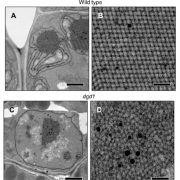
Etioplasts: The Role of Digalactosyldiacylglycerol
Blog, Plant Physiology, Plant Physiology: On The InsideIn dark-grown plants, the plastids of cotyledon cells develop as etioplasts. Etioplasts contain unique internal lattice membrane structures called prolamellar bodies (PLBs) and lamellar prothylakoids (PTs). PLBs accumulate protochlorophyllide (Pchlide), a chlorophyll intermediate, in a complex with NADPH…

Singlet Oxygen and Osmotic Stress
Blog, Plant Physiology, Plant Physiology: On The InsideSome experimental systems aimed at understanding the effects of drought on plants have incorporated cell-impermeable high molecular weight polyethylene glycol (PEG) to mimic the osmotic component of drought stress. The use of PEG showed that drought stress response could be separated into components…

